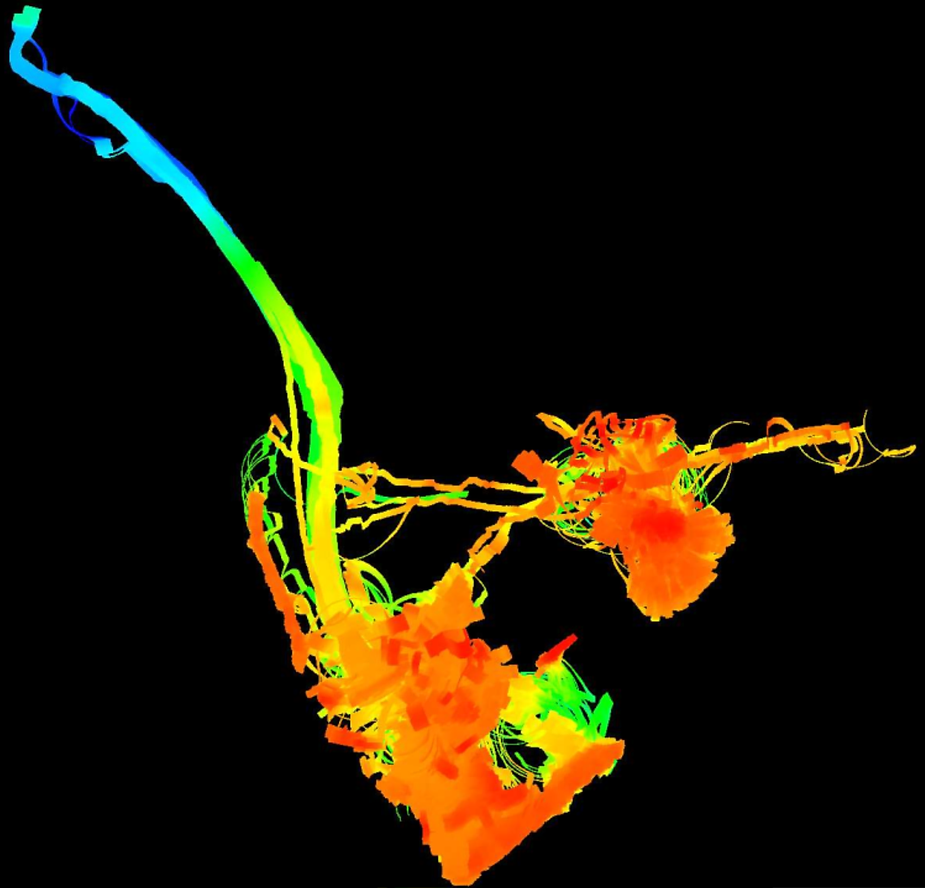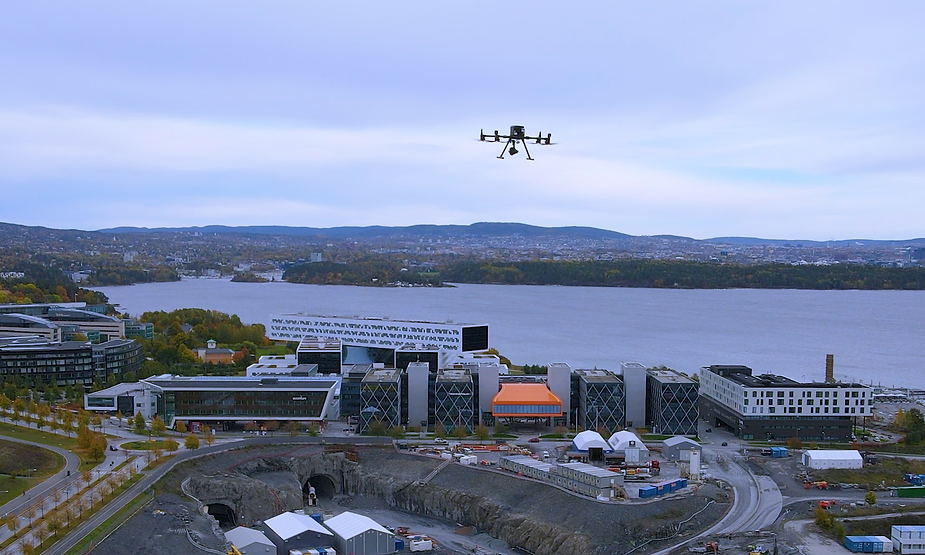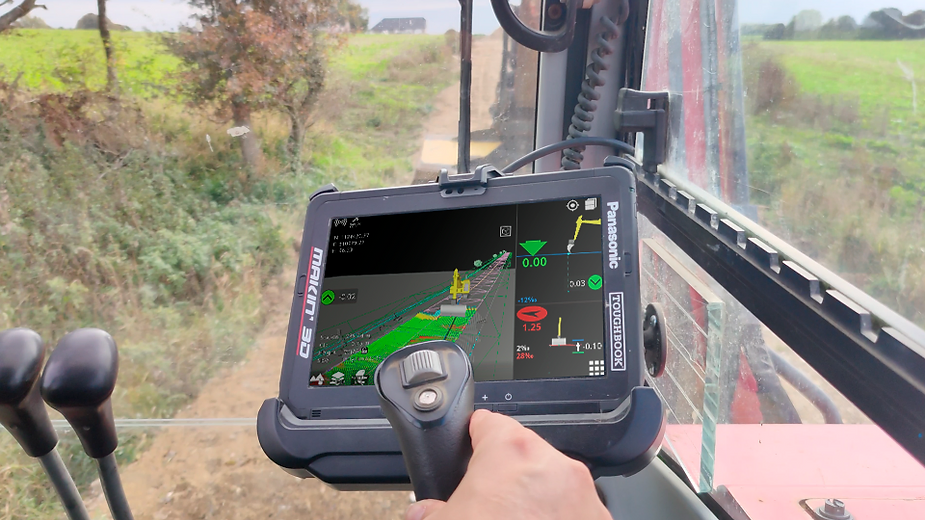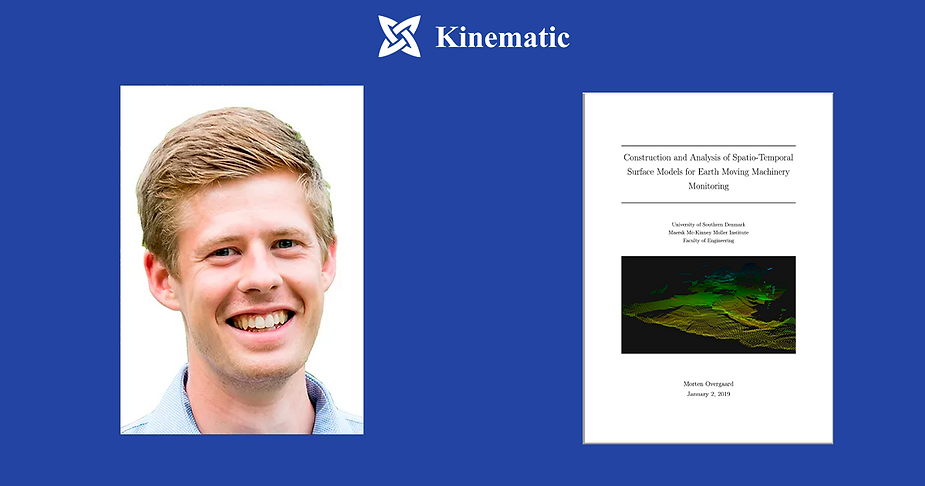In 2019, Morten Overgaard handed in his master’s thesis and could call himself MSc in Engineering in Robot Systems, the culmination of five years of studying at the University of Southern Denmark in Odense, which has developed into one of the world’s leading hotspots for robot, automation, and drone technology.
The title of the thesis was “Construction and Analysis of Spatio-Temporal Surface Models for Earthmoving Machinery Monitoring”, and investigated the development of a new method for as-built documentation of the excavator’s work on a construction project. The method involved gathering data from the bucket’s movements in the form of a dense point cloud that describes the surface of the excavation.
The thesis demonstrated that data can be updated in real time in machines and on servers for the use of continuous visualization, documentation, and calculation of the performed work. With the right choice of data formats and methods this is even possible within the limits of an ordinary mobile data service.
Now, about four years later, the first part of the project is to be launched and can be ordered as a new function in Makin 3D’s machine control solutions for excavators. The customers are construction companies, including large companies such as Skanska and Veidekke Entreprenør.
Morten chose to write for the company Kinematic
When writing a master’s thesis, you can choose to write a project together with the university or together with an external company.
Morten chose to write his thesis together with the company Kinematic, the co-owner company of Makin ApS that is launching the finished product under the name Makin’ Surfaces.
“The preliminary work focused on investigating the right data structure, communication, choosing the smartest way to compress data, and in general solve the task of live data update without overloading the customer’s data traffic,” Morten explains.

Height heat map of the logged surface shown on the project.
Visualization of the machine operator’s work
Surface logging is performed automatically during excavation. The excavation under the originally measured terrain is logged continuously and can be visualized in relation to the machine control’s project model that guides the machine operator.
Visualization of the actual excavation can be a great advantage for the excavator operator when working “blindly” under water, mud, or in blind cuts.
With traditional methods, the machine operator must remember to log manually. With Makin’ Surfaces logging is performed automatically.

Original terrain and actual project status can occasionally be measured with a drone equipped with LIDAR technology.
“The machine operator does not have to think about logging. Everything is measured, and you get a very clear description of the work under water,” says Anders Lillesæther, Surveyor at Veidekke Entreprenør.
Veidekke has worked with Makin’ Surfaces on the KSN Hestnes tunnel project in Norway, where it has been used to log the excavation of the bottom of the lake for as-built documentation and mass balance calculations.
“It is automation the smart way! The machine operator no longer needs to log points manually by setting the bucket down every 10 meters and then press log point in the software, for example. The surveyor also avoids driving out to the site for as-built documentation. Logging is automatic, which simplifies the entire workflow and makes it more efficient,” says Morten.

The color-coded plot in Makin’ Surfaces supplies the operator with a useful overview of the project and possible deviations from the desired surface.
The future is all about data
For the Surveyor, Geomatic Engineer, or Data Manager, time and costs are saved. The improved as-built documentation is important for invoicing of the performed work, and if there is a need to prove exactly what has been excavated.
“Without Makin’ Surfaces, you have to think about what to measure, because you can’t see it. Here you get a point cloud on everything,” explains Anders Lillesæther.
“Makin’ Surfaces provides accurate documentation directly from the machine and a lot more detailed documentation,” explains Sindre Flaten, who works as Geomatic Engineer at Skanska in Oslo. Sindre has tested the system on the Fornebu Train Terminus project in Oslo.
“Makin’ Surfaces is a great advantage when working with layers of different materials,” says Sindre.

Makin’ Surfaces gives a very detailed and accurate documentation of the excavator’s work, immediately and as often as you need it.
Could Makin be your future workplace?
For Morten, it has been very satisfactory to see his project being implemented in real life and to be part of creating a new standard for the construction industry.
Morten chose to work with Kinematic, because it was a project with a great potential and with the goal of creating a real product. Morten thought that Kinematic was a great at helping and providing feedback.
“I will recommend all new students to thoroughly investigate the possibility of writing their thesis together with an external company, and to clearly agree on the basis of the cooperation in advance,” says Morten.
On a yearly basis, Kinematic has two to three master thesis students, trainees, or software programmers. Focus is on knowledge sharing and close cooperation as a solid foundation for a master’s thesis project or trainee internship.
“In the beginning, I was a little hesitant towards doing my master’s thesis with an external company. I had heard from other students that some companies found it difficult to find time for supervision and the necessary sparring. This was not the case with Kinematic. I felt that they really took the time to help me during the project,” says Morten.
If you are right now studying to become a Computer Scientist, Robotics Engineering, Data Scientist, Software Engineer, or similar, you are welcome to contact Kinematic.
You can contact Director of Kinematic Lars here: Lars@Kinematic.dk.
Author and photographer: Karina Lykke Lumholt
